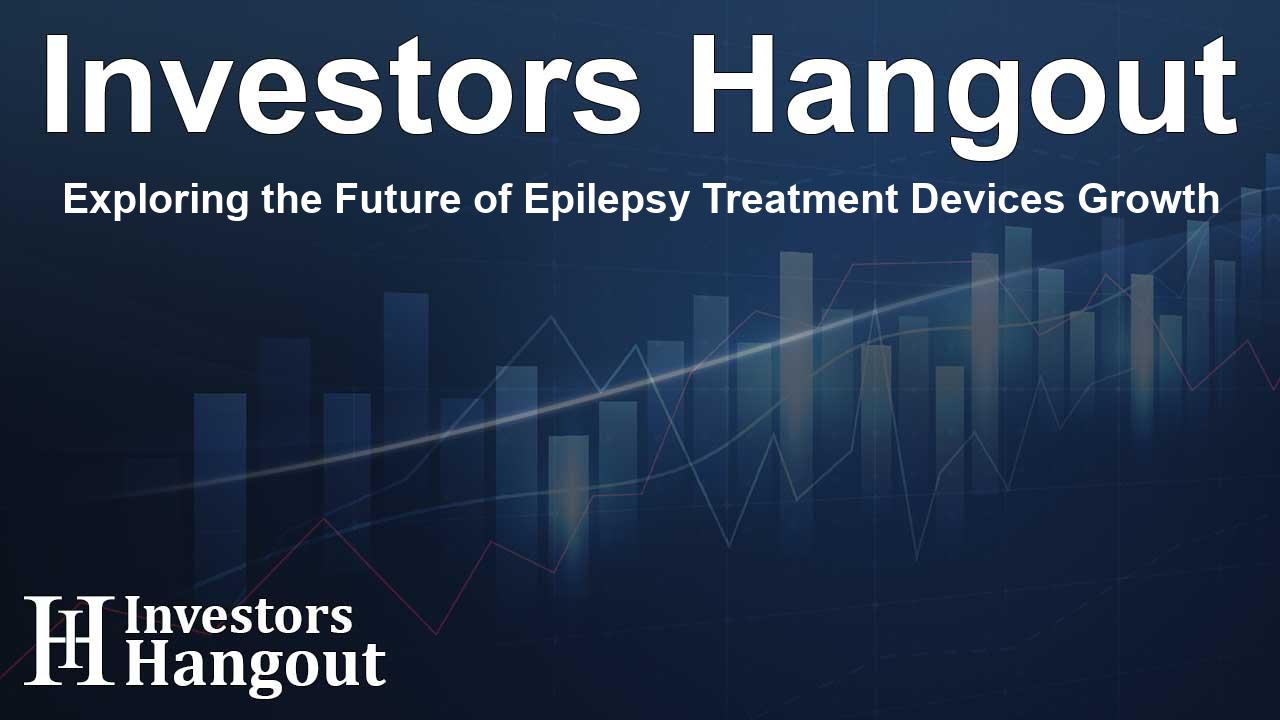Exploring the Future of Epilepsy Treatment Devices Growth

A Overview of the Expanding Epilepsy Treatment Devices Market
The epilepsy treatment devices market has exhibited significant growth, driven by technological advancements and an increasing awareness of epilepsy's prevalence worldwide. Constant innovations in medical devices are enhancing the quality of care provided to patients. As the demand grows for effective solutions for epilepsy management, the market is projected to reach a remarkable valuation by the end of the forecast period.
Key Growth Drivers in the Market
Several pivotal factors are steering the growth of the epilepsy treatment devices market:
Technological Advancements
Ongoing advancements in neurostimulation technologies are shaping the future of treatment devices. Innovations such as Vagus Nerve Stimulation (VNS), Responsive Neurostimulation (RNS), and Deep Brain Stimulation (DBS) are at the forefront, offering improved functionality. These technologies are being enhanced with better electrode designs, advanced stimulation algorithms, and compatibility with modern imaging technologies, improving efficacy and patient outcomes.
Increased Awareness and Prevalence of Epilepsy
The rise in global epilepsy cases, particularly among aging populations, is leading to heightened sensitivity and comprehension of the disorder. This demographic shift is prompting healthcare systems to adapt, thus driving demand for epilepsy treatment devices. The increased prevalence, combined with better diagnostic capabilities, highlights the urgency for effective treatment modalities in the market.
Government Initiatives and Healthcare Infrastructure
Governments worldwide recognize the necessity of enhancing healthcare systems. Supportive policies and infrastructure investments are vital in increasing the availability and accessibility of advanced medical technologies. Efforts to push for better funding and regulatory frameworks have become essential in fostering a conducive environment for innovative epilepsy treatment solutions.
The Shift Towards Minimally Invasive Procedures
Minimally invasive techniques are gaining popularity for epilepsy treatments, with procedures like laser ablation and stereotactic radiosurgery (SRS) becoming preferred options. These approaches reduce recovery times and risks while improving patient comfort, further fueling market growth.
Technological Integration in Patient Care
Shifts in patient preferences towards wearable and non-invasive devices are transforming how epilepsy care is delivered. These advancements allow patients to monitor and manage their symptoms in real-time, enhancing their quality of life without the discomfort of invasive treatments.
Recent Innovations and Industry Collaborations
Industry collaborations and strategic business partnerships are proving instrumental in introducing innovative solutions to the market.
New Product Launches
For instance, a Spanish start-up recently launched a groundbreaking device utilizing AI for predicting seizures, illustrating the continuous evolution within this sector. Such innovations are pivotal in improving the standards of epilepsy management and patient care.
Mergers and Acquisitions
Similarly, notable acquisitions, such as version advancements by established companies, further illustrate the industry's dynamic nature. For instance, a major player in the field recently acquired a subsidiary focused on developing high-density EEG solutions, demonstrating a commitment to innovation and growth in the epilepsy treatment landscape.
Market Projections and Future Outlook
The epilepsy treatment devices market is projected to grow significantly, with estimates indicating it could reach around USD 787.3 million by 2033, growing at a compound annual growth rate (CAGR) of approximately 4.1% between 2024 and 2033. Continuous research and development investments by device manufacturers contribute to this optimistic outlook, emphasizing the vital role of innovation.
Frequently Asked Questions
Where is the epilepsy treatment devices market heading?
The market is expected to see substantial growth, reaching around USD 787.3 million by 2033, driven by technological innovations and increased demand.
What are the key technologies in epilepsy treatment?
Key technologies include Vagus Nerve Stimulation (VNS), Responsive Neurostimulation (RNS), and Deep Brain Stimulation (DBS), which are continuously evolving to improve treatment outcomes.
How does government policy influence the market?
Government initiatives aimed at enhancing healthcare access and funding significantly support the growth and expansion of the epilepsy treatment devices market.
What trends are influencing patient preferences?
Patients increasingly prefer non-invasive, wearable treatment options that offer real-time monitoring and greater comfort compared to traditional methods.
How is innovative technology shaping the future of epilepsy treatment?
Innovations like AI-based seizure prediction devices are paving the way for enhanced patient care and proactive seizure management strategies.
About Investors Hangout
Investors Hangout is a leading online stock forum for financial discussion and learning, offering a wide range of free tools and resources. It draws in traders of all levels, who exchange market knowledge, investigate trading tactics, and keep an eye on industry developments in real time. Featuring financial articles, stock message boards, quotes, charts, company profiles, and live news updates. Through cooperative learning and a wealth of informational resources, it helps users from novices creating their first portfolios to experts honing their techniques. Join Investors Hangout today: https://investorshangout.com/
Disclaimer: The content of this article is solely for general informational purposes only; it does not represent legal, financial, or investment advice. Investors Hangout does not offer financial advice; the author is not a licensed financial advisor. Consult a qualified advisor before making any financial or investment decisions based on this article. The author's interpretation of publicly available data shapes the opinions presented here; as a result, they should not be taken as advice to purchase, sell, or hold any securities mentioned or any other investments. The author does not guarantee the accuracy, completeness, or timeliness of any material, providing it "as is." Information and market conditions may change; past performance is not indicative of future outcomes. If any of the material offered here is inaccurate, please contact us for corrections.